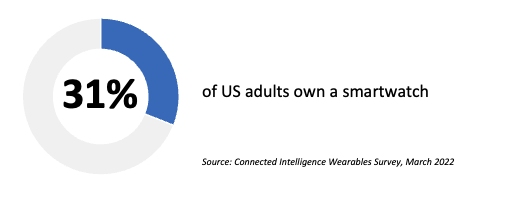
Meta Watch on the Shelf?
According to Bloomberg, Meta has halted development of its proposed dual-camera smartwatch. The Bloomberg report claims that there were technical issues with the design (notably the second camera in the under-side of the watch interfered with the watch’s ability to pick up nerve signals) as well as general cost-cutting moves at the company. The rumor has not, at this point, been confirmed or denied by Meta. Further, we expect that Meta was working on multiple wrist-base designs, so it is possible that a smartwatch will still launch, but perhaps with only one camera.
The NPD Take:
- We were very intrigued by the bold concept of the Meta Watch, and not just because it came equipped with cameras. Rather, we were most interested in the impact that a social-media-first company could have on the market, moving the watch concept beyond its obvious target segment now (exercise) and into a broader area of the population.
- That was particularly of interest as ownership growth of smartwatches has stalled out at around 31% penetration in the US and the market is unlikely to expand significantly without a fresh look at use cases.
- The current market situation is far from ideal for any new device such as this. With significant inflation and cost of living increases, not to mention chipset shortages, the near-term market for “nice to have” rather than “must have” technology will be challenging.
Discounts on the Rise?
The past week saw promotional offers for both Apple and Samsung watches, as well as the usual suspects of course. Apple cut $30 off the price of the SE model, reducing the price of the 40mm device from $279 to $249. Samsung dropped the price of the Galaxy 4 (40mm) to $179, which is 28% off the list price. Both deals have a short fuse.
The NPD Take:
- As we mentioned in the Meta Watch piece above, growth in smartwatch ownership has stalled at 31% of the US adult population in the past year.
- To be clear, this does not mean sales have stalled. But it does mean that sales are being driven (for the most part) by existing owners looking to upgrade their current device. As a result, the market may be moving out of the initial exuberance of new customer growth and into more of a fight for brand loyalty among the existing base.


